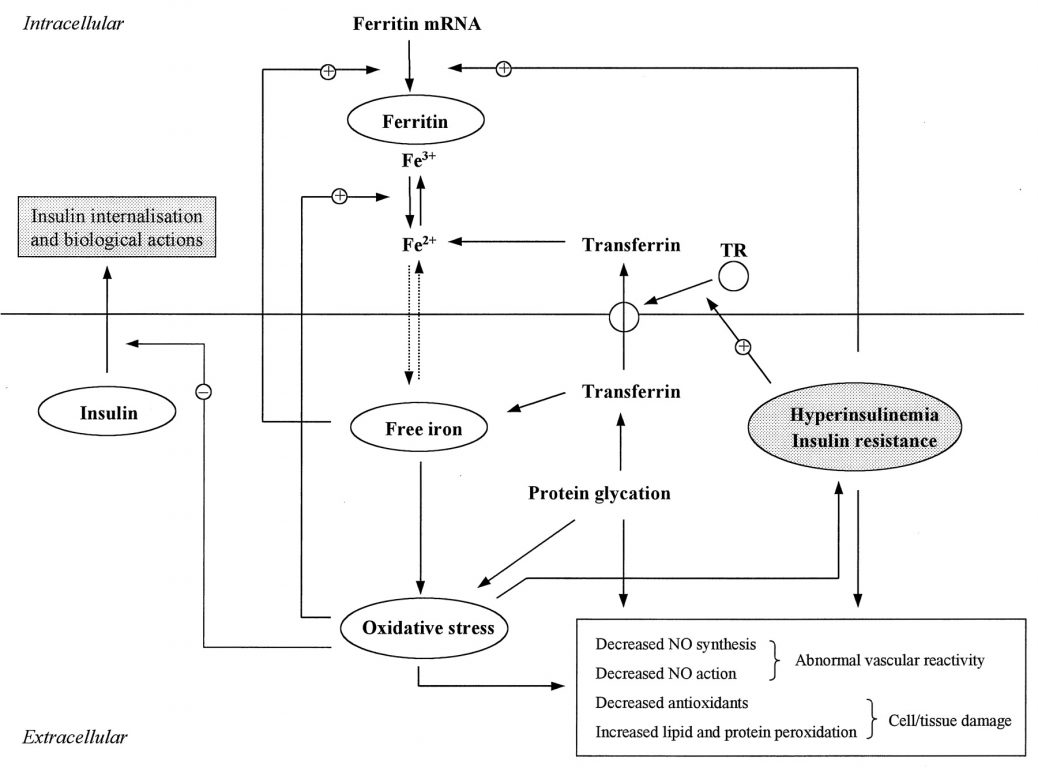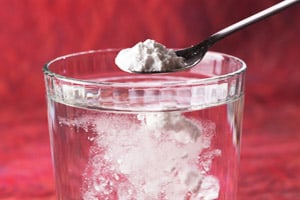The more I read about iron the more convinced I become it’s a key, perhaps the key, to avoiding a long list of human ailments, as well as aging. Elevated iron levels are associated with most major diseases we humans suffer, a root cause of the serious complications and deaths from covid, and per studies below, dysregulation of blood glucose, insulin sensitivity, and diabetes.
We can’t live without iron, so it’s truly a metabolic double-edged sword in human metabolism. Without sufficient iron we suffer anemia and the various ills associated with it. Iron is essential for oxygen transport, cellular respiration/ATP production, immunity, wound healing, to name just a few essential functions of iron. Iron homeostasis is a key to the balancing act in human aging and disease, and it, like so many others, becomes less efficient with aging and various diseases. A full discussion of that topic is well beyond this article, but linked articles within and sources provided are the places to start for those who wish to learn more. Suffice it to say, iron is very tightly regulated by the human body as it’s highly toxic when even minute levels of dysregulation take place and anything that helps/supports regulation and homeostasis is likely a benefit. As alluded to above, iron appears to be directly involved with blood glucose regulation, insulin sensitivity, and diabetes. An excellent review paper – Cross-Talk Between Iron Metabolism and Diabetes – covers this topic extensively. Here’s the abstract, but note the text in bold:
“Emerging scientific evidence has disclosed unsuspected influences between iron metabolism and type 2 diabetes. The relationship is bi-directional—iron affects glucose metabolism, and glucose metabolism impinges on several iron metabolic pathways. Oxidative stress and inflammatory cytokines influence these relationships, amplifying and potentiating the initiated events. The clinical impact of these interactions depends on both the genetic predisposition and the time frame in which this network of closely related signals acts. In recent years, increased iron stores have been found to predict the development of type 2 diabetes while iron depletion was protective. Iron-induced damage might also modulate the development of chronic diabetes complications. Iron depletion has been demonstrated to be beneficial in coronary artery responses, endothelial dysfunction, insulin secretion, insulin action, and metabolic control in type 2 diabetes. Here, we show that iron modulates insulin action in healthy individuals and in patients with type 2 diabetes. The extent of this influence should be tested in large-scale clinical trials, searching for the usefulness and cost-effectiveness of therapeutic measures that decrease iron toxicity. The study of individual susceptibility and of the mechanisms that influence tissue iron deposition and damage are proposed to be valuable in anticipating and treating diabetes complications.”
A therapeutic these authors are apparently unaware of is the whey derived bio-active peptide lactoferrin, a topic I have been writing about for almost three decades. Lactoferrin is directly and specifically involved in iron regulation and homeostasis. I strongly recommend people read some of the articles linked for additional information on that. I will also link an excellent recent review paper on lactoferrin following this discussion. The same authors of the review above, had a follow up paper – Mechanisms Linking Glucose Homeostasis and Iron Metabolism Toward the Onset and Progression of Type 2 Diabetes – in which they state:
“Iron is increasingly recognized to influence glucose metabolism at multiple levels. Body iron stores should be considered as a potential target for therapy in subjects with T2D or those at risk for developing T2D.”
Both of those papers are a must read for those who want to see the evidence for the role of iron in blood glucose metabolism and diabetes. It’s a complex topic (understatement of the year…), but suggests excess iron and iron metabolism is a therapeutic target, which brings us back to lactoferrin as a possible targeted therapeutic. A high-quality whey protein contains 1% or less lactoferrin, and it can be taken as a stand-alone supplement. The only real drawback I’m aware of of lactoferrin is the cost. It’s difficult and expensive to produce isolated lactoferrin.
Testing Iron Status
As with most things, labs are a must to know what your metabolic status is. Data would suggest keeping iron (Ferritin levels) in the low “normal” range may be an overall benefit to health, metabolism, and risk of major diseases, but more data is needed. Specific to blood glucose, insulin sensitivity, diabetes, and perhaps even weight loss, lactoferrin falls under “may be worth a try” in my estimation. Of course, there’s no magic bullets and best responses and outcomes will happen with all important changes in nutrition, exercise, targeted supplements, and meds, if required.
Conclusion
I’m trying to condense a lot of complicated information in this one and overlap them. Basic summary is, iron excess, even mild excess iron or “mild hyperferritinemia” (defined as ferritin between 100 and 300 mg/dL) is associated with potential metabolic negatives in glucose metabolism, and the papers linked above go into great detail. In his recent interview in Life Extension Magazine – which is recommend reading – author of The Mindspan Diet, Dr. Preston Estep discusses the dangers of elevated iron on the risk of Alzheimer’s disease and recommends “For men and women, aim for 10 to 40 ng/mL (standard units), or micrograms per liter (international units) for maximum health benefits. This range is based on historical levels in Japanese women. They have the lowest iron levels in the developed world, the longest lives, and low rates of Alzheimer’s disease.”
Along with its many other potential benefits, lactoferrin may be “just what the doctor ordered” as to controlling iron stores as data suggests (see sources in articles linked) and as promised, a recent paper on lactoferrin (J. Foods. 2023 Jan; 12(1): 70.) covers the potential benefits:
“LF is a protein with multiple health-promoting properties. It exhibits anti-inflammatory, antibacterial, antiviral, immunomodulatory, antioxidant, and anti-tumour activity. The LF consumption from dairy products is insufficient to observe additional health benefits. Therefore, the supplementation or fortification of food products with LF is recommended. Supplementation with LF has a protective effect in obesity, positively influencing BMI and WHR and suppressing appetite. Moreover, LF can be used as a supportive treatment in diabetes by improving glycaemia and reducing inflammation. In addition, in cardiovascular diseases, LF has an antihypertensive effect and improves lipid parameters. Due to its ability to bind iron, it has also been used to treat iron deficiency and anaemia.”
Full Paper HERE
Will Brink is the owner of the Brinkzone Blog. Will has over 30 years experience as a respected author, columnist and consultant, to the supplement, fitness, bodybuilding, and weight loss industry and has been extensively published. Will graduated from Harvard University with a concentration in the natural sciences, and is a consultant to major supplement, dairy, and pharmaceutical companies.
His often ground breaking articles can be found in publications such as Lets Live, Muscle Media 2000, MuscleMag International, The Life Extension Magazine, Muscle n Fitness, Inside Karate, Exercise For Men Only, Body International, Power, Oxygen, Penthouse, Women’s World and The Townsend Letter For Doctors.
He’s also been published in peer reviewed journals.
Will is the author of the popular e-books, both accompanied by private members forum access , Bodybuilding Revealed & Fat Loss Revealed.
You can also buy Will’s other books on Amazon, Apple iBook, and Barnes and Noble.








I think I mentioned IP6 to you on Facebook. It’s used to lower iron levels and it’s cheap.
I’ve been putting IP6, creatine and taurine in my morning coffee for a few years now.
Well, only somewhat related, but with iron and Alzheimer’s, a new study ties it to a magnetic particle. Even they don’t mention iron, because who does?
Australia’s University of Technology Sydney unveiled new research undertaken by some of its faculty into the possible link between Alzheimer’s and magnetite, a pollutant most commonly associated with vehicle exhaust.
A magnetic particle attracting iron. You don’t say…
You don’t say!